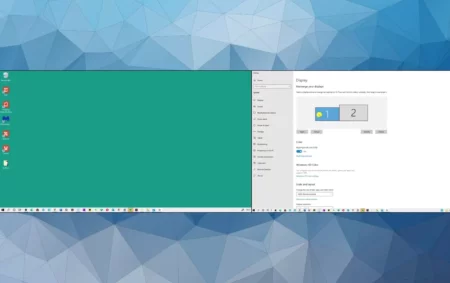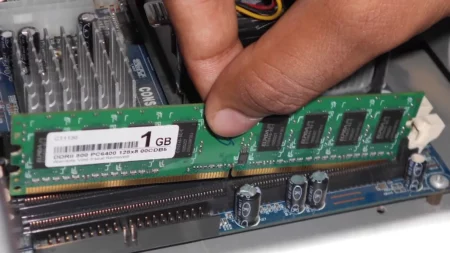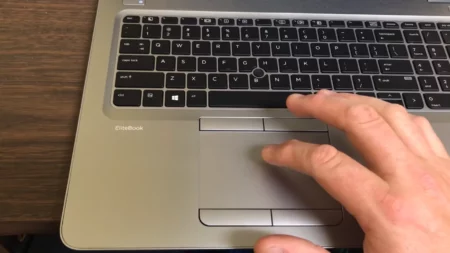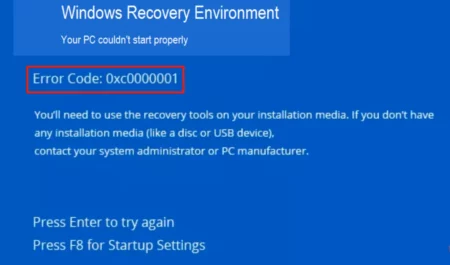If you ever run a damp finger on a wine glass, the vibration you feel is the same as the CPU coil whine. All electronic devices come with multiple inductors, each with numerous coil whines. When the GPU coils work, and they produce audible vibration, and your ear can hear the sound or feel it, it is known as the GPU coil whine. This article will let you know everything about coil whine in detail.
There are numerous ambiguities regarding coil whine. Some consider it harmful to your PC performance, and others do not. However, one thing is sure it diverts the user, which ultimately doesn’t contribute to the goal achievement. I have been studying and experiencing GPU coil whine for years and know well enough how to deal with it to retain your PC’s performance level up. So, let’s get started with the table of contents.
What is Coil Whine in Graphics Card?
The GPU coil whine is a clear manifestation, and if there is anything that you need to be aware of, this article will help you learn it all. Of course, building a PC with zero noise is in fashion nowadays. But it is impossible because of one irritating sound, the coil whine. Your GPU has multiple electromagnetic coils, and when the current passes through the inductors, you may easily hear a sound at this point.
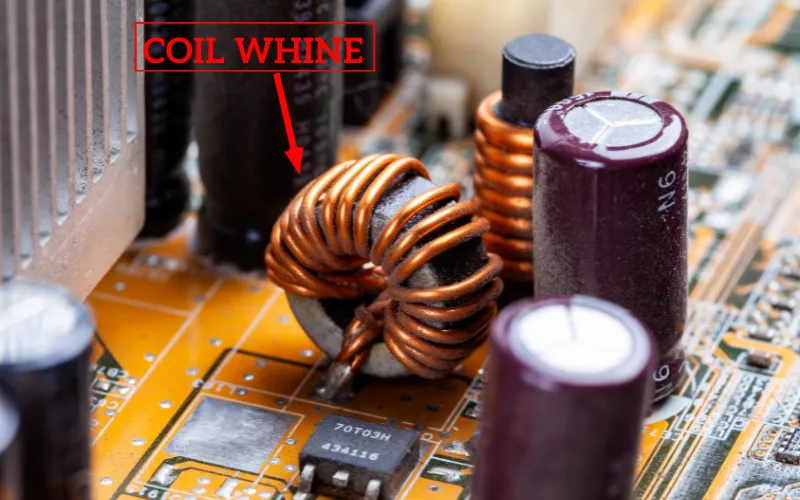
The sound seems to be crashing a bar code or something like that. It annoys the user, and as you run a heavy application or play games with multiple other applications simultaneously, it compels the copper site to vibrate. This vibration causes the sound which we are talking about. There is a level of frequency that causes the birth of this problematic sound.
You can only hear this sound sometimes because sometimes it is out of audible range. And whenever the frequency comes in the audible range, you can bother your ears with this offending sound. So, I’ll also share how to stave off this sound to the fullest and get yourself a comfortable working room.
How Coil Whine Affects Your PC?
The question is overkill for the users to think of this over and over. It has no impact on the hardware to make it undone for any job. All you need to do is to bear the fatal sound. On the other hand, it may cause headaches in some cases.
I hope you got to know the GPU coil whine in a better and simple way. It is the beating of the coil only, and when the vibration level goes up due to the faster flow of energy, the sound touches your ears badly.
Is GPU Coil Whine Bad?
If we look at the practical application of the coil whine, it doesn’t influence your PC’s hardware. As I mentioned above, it is a sound that results from vibration when the current passes through the inductors. It infuriates the user awfully but doesn’t harm anything visibly.
GPU coil whine under load is not so annoying, and when the current flow goes up, the sound goes wildly irritating. So, the coil whine is not bad for your hardware or any other component in your PC except for the nuisance your ears must bear.
However, there are some precautions that you may take to prevent the GPU coil whine. Let’s get to know the topic in detail below.
How to Avoid Coil Whine? (5 Easy Steps)
We know that the coil whine has no significant impact on the performance of the hardware. However, it distracts the user and can cause trouble attaining the desired outcomes. So, prevention is the best policy to avoid any unfortunate episode.
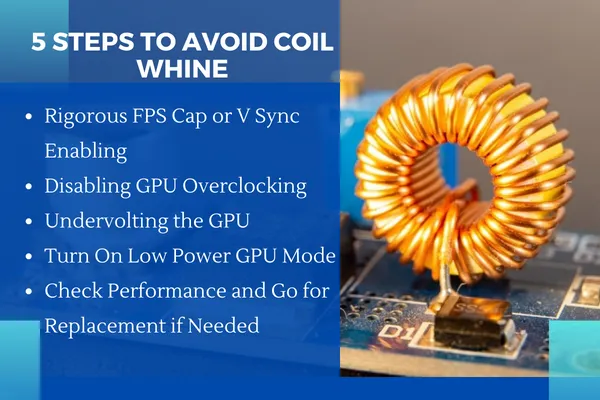
1) Rigorous FPS Cap or V Sync Enabling
If your GPU is powerful enough to run old and most popular games, you need to know that it requires a higher framerate to make it up. A rigorous FPS cap can help you avoid unnecessary sounds, which we call the coil whine. GPU coil whine high FPS helps your machine to prevent screen tearing and maintain the statistics that withstand the coil whine.
2) Disabling GPU Overclocking
When you overlook the GPU, it increases the energy flow, and that causes the coil to whine. So, to fix the issue instantly, you can go for the undone GPU overclocking. Sometimes, you feel the GPU coil whine when scrolling, so you can go for the replacement if the fixation doesn’t help you rectify the issue. However, the moment you put the overclocking down, the coil whine eliminated itself in most cases.
3) Undervolting the GPU
Undervolting the GPU is frequent practice users go with, and it helps the coil whine instantly. You can get help from GPU tuning software to make up for the procedure. You can also go for the optimum level of performance at less power if you know the secret behind it.
4) Turn On Low Power GPU Mode
You must access the GPU manufacturer’s website to get the correct information. However, it will help you gain control software, and you can control things quickly and contact the power mode down anytime you need. In addition, it will help reduce the flow, directly decreasing the sound.
5) Check Performance and Go for Replacement if Needed
After applying checks, you need to check out the performance level of the PC. It is good; now you need to examine the coil whine. I hope you get something positive and very near to your expectations. However, if things don’t turn over in your favor, you are good to go for replacing the GPU. GPU coil whine sounds typically awkward, but after putting some vigilance, you can get it to a safe zone.
GPU Coil Whine Caused by PSU
Three components are usually mainly responsible for coil whine: a motherboard, a power supply unit, and GPU. All three participants have a single thing in common: the power flow. Whenever the current flow fluctuates, that is the most potential reason behind the coil whine.
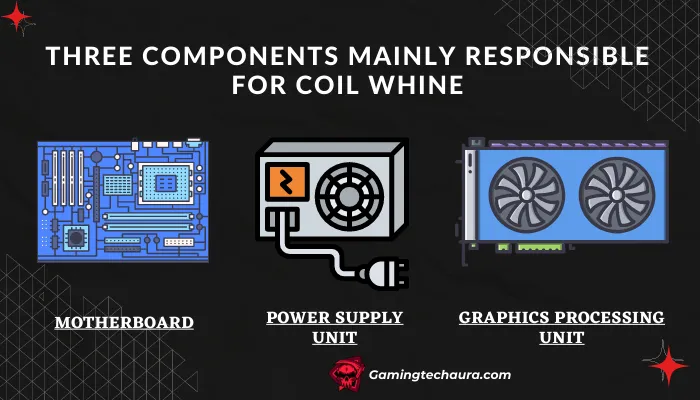
When inductors work under a heavy load and must transfer a considerable amount of power, and that power generates vibration, we refer to it as the coil whine caused by PSU.
The answer is Yes. Over time, the coil whine goes away but not in all cases. Sometimes, it takes a few days only to eliminate the sound after getting a new GPU. In some cases, the duration goes longer to unexpected extents. However, in most cases, it disappears in a few days, and sometimes, it stays permanently.
If your GPU card starts producing noises that irritate your ears continuously, and whenever you run an application with a heavy load, and the sound begins thriving, it is the sound of coil whine. It seems like a hissing or scratching noise. The sound may vary from PC to PC. It is a high-frequency sound that plays with your ears.
I hope you have learned everything about GPU coil whine so far. It is not significantly harmful to your PC or any of its components. However, it has a significant role in creating a nuisance that leads to distraction. It comes from vibration when the inductors pass the current, and the noise becomes audible. In some cases, you can eliminate it, but only in some. By the time you use your GPU, the noise gradually decreases.
Final Words
